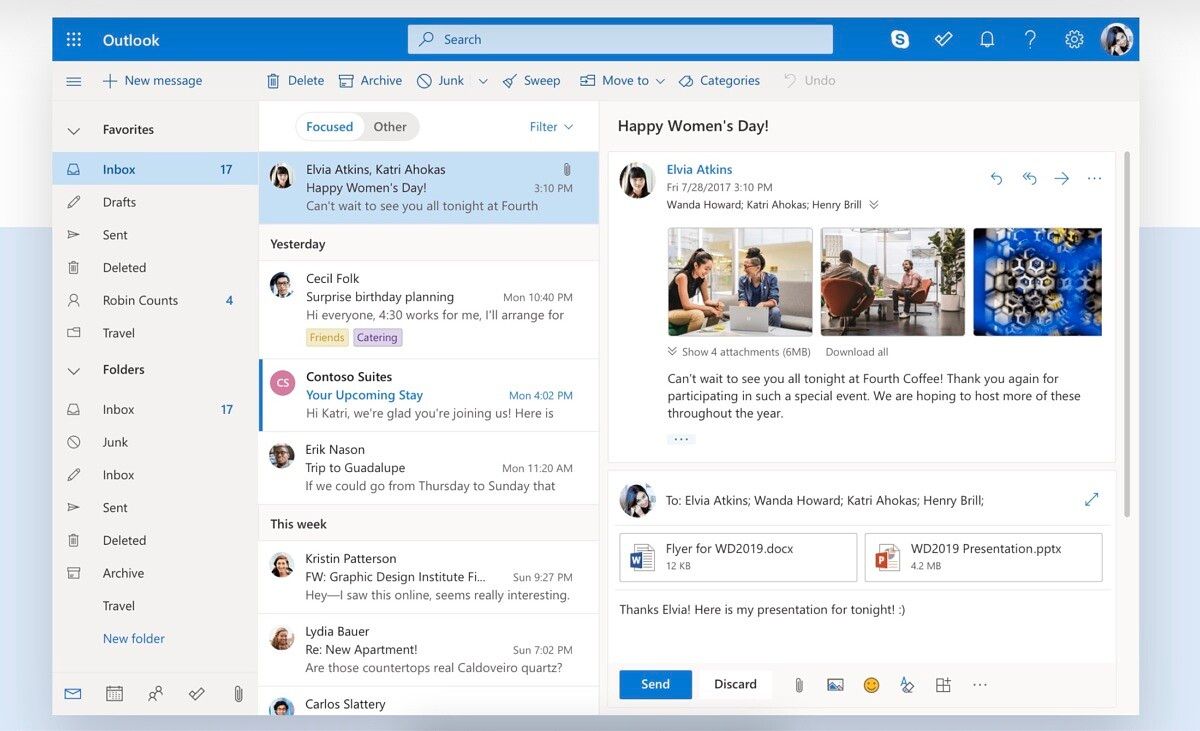As part of Microsoft’s “One Outlook†initiative, the company is reportedly planning to introduce a universal Outlook client based on the web app.
According to Windows Central, the universal Outlook Web app (codenamed Monarch) will eventually replace the default Mail & Calendar apps on Windows 10. The new app will also replace the many different Microsoft Outlook apps currently available, including Outlook Web, Outlook (Win32) for Windows, and Outlook for Mac.
Microsoft wants to replace the existing desktop clients with one app built with web technologies. The project will deliver Outlook as a single product, with the same user experience and codebase whether that be on Windows or Mac.
Notably, the upcoming Outlook app will be accessible to everyone whether they’re free Outlook consumers or commercial business customers, Windows Central said. Microsoft previously detailed its One Outlook vision in September of last year, saying it wanted to offer consumers an experience that feels native to the OS no matter their platform of choice.
Microsoft will reportedly preview Monarch at the end of 2021, with the aim to replace Mail & Calendar apps on Windows 10 in 2022. The company also has its sights set on replacing Outlook (Win32) for Windows. However, that will be a much more monumental task considering how embedded the service is in enterprise.
When Monarch does launch, it will reportedly offer OS integrations such as offline storage, share targets, notifications, and more. Windows Central claims Mail & Calendar apps for Windows 10 have been put into maintenance mode as Microsoft goes full steam ahead with its universal Outlook client. The apps will allegedly receive one final UI tweak as part of Windows 10's Sun Valley update, but that's it.
A leaked version of the Microsoft Outlook web app was spotted on Twitter by user @WinObs. A description for the app says One Outlook is only for "brave dogfooders," which is essentially a warning that things are in the very early stages, even for internal testers. The Verge reports that the leaked app isn't functional without a full internal Microsoft account, so consumers may not be able to test it out until the end of this year.

